TRENDING
Rare Photographs From The Civil War
Published
4 years agoon
The Civil War is one of the United States’ most defining moments, and apart from the catastrophic cost of life and the unprecedented divisions that took place, it still stands as a pivotal moment in Western history. But have you seen the photos that actually captured the era?

Most people don’t even realize cameras were around in the 1850s, and although they were much bigger, took crazy amounts of time to develop photos, and only could be moved to certain places, they caught some unbelievable moments. Enjoy these Civil War era photos that truly paint a clearer picture of just how unique and momentous the events in the war were.
Railroad Mortar
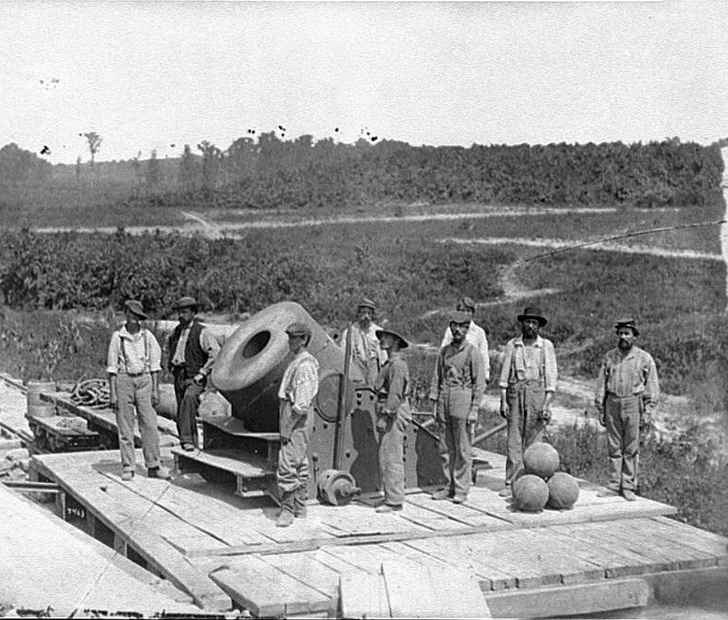
The 13-inch mortar known as “Dictator” was one of the most powerful weapons of the Civil War. This photograph was taken on a railroad in Petersburg, Virginia in 1864. This mortar weighed 17,120 pounds, and was made for the Siege of Petersburg.
The Biggest Loss Of Life In American History
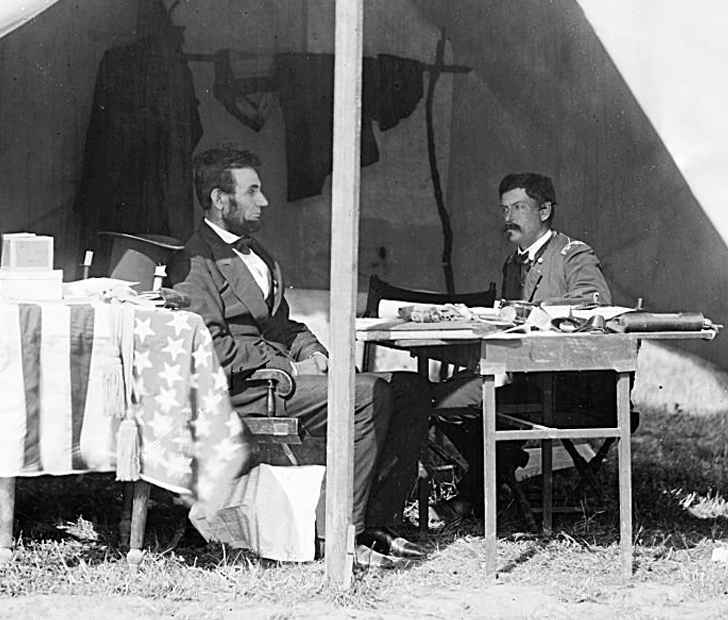
The Civil War was a brutal blow to America’s population, spirit, and unity, taking the lives of 625,000 men, more than those who died in World War I, World War II, the Korean War, and the Vietnam War combined. Photography was introduced about twenty years prior, so these rare photographs are the first exhibition of war photojournalism at that time. They were purchased by the Library of Congress in 1943 and put into archives. Here are some of the most captivating and devastating photos from the collection.
Brompton Oak
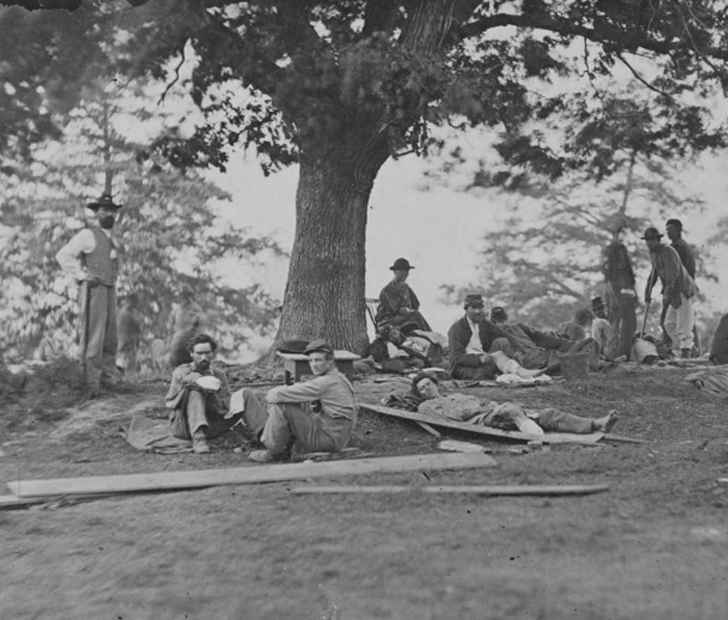
The brick plantation that housed this oak tree was used as a hospital, set up after a horrific battle in Spotsylvania, Fredericksburg. To this day, the plantation and surrounding buildings still have bullet holes from the battles that took place in that field.
Refugee Family
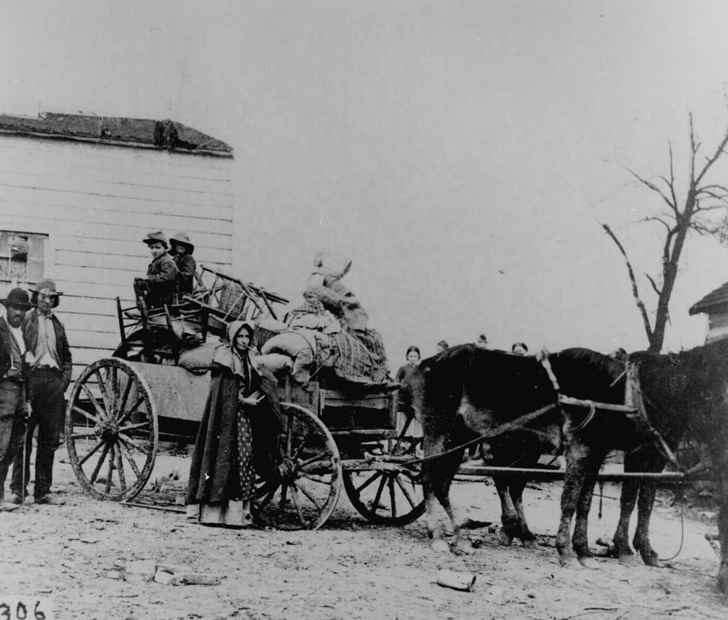
Approximately 200,000 southerners fled their homes during the war, the largest groups migrating from Virginia. This photograph displays a family leaving their home with a cart stuffed with belongings, furniture, clothes, and keepsakes.
Arlington House
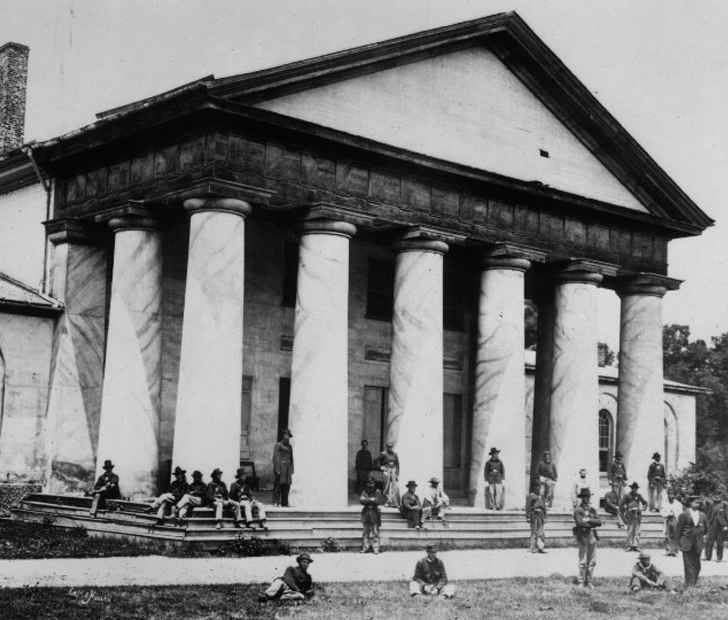
Also known as the Robert E. Lee Memorial, the Arlington House is a Greek revival-style mansion in Virginia that was once the home of General Robert E. Lee. He was a fearless leader, known for commanding the Confederate Army of Northern Virginia from 1862 until his surrender in 1865.
Ruins of Haxall Flour Mills
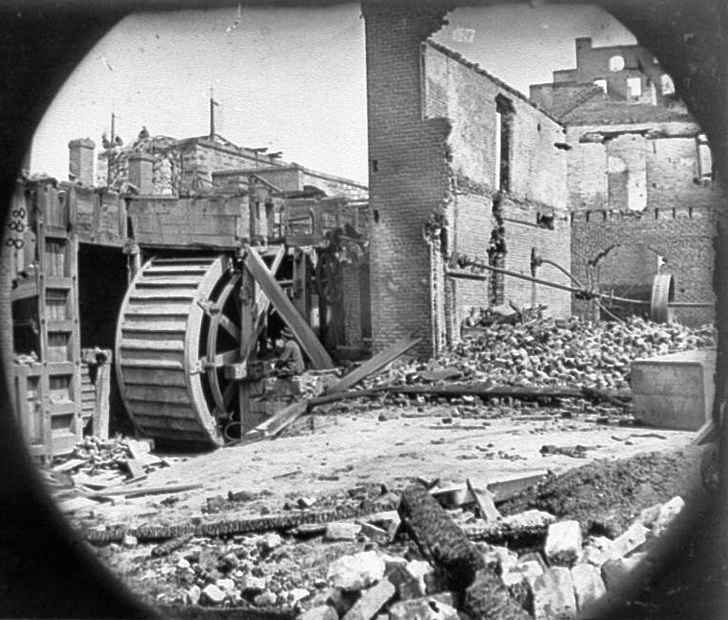
This devastating photograph shows the ruins of the Haxall Flour Mills in Richmond, Virginia, after the Confederate armies set fires all over the mills. At the time, Haxall Flour Mills was one of the largest flour mills in the entire world. Owner Bolling W. Haxall was one of the richest businessmen in the state prior to the war.
Cumberland Landing
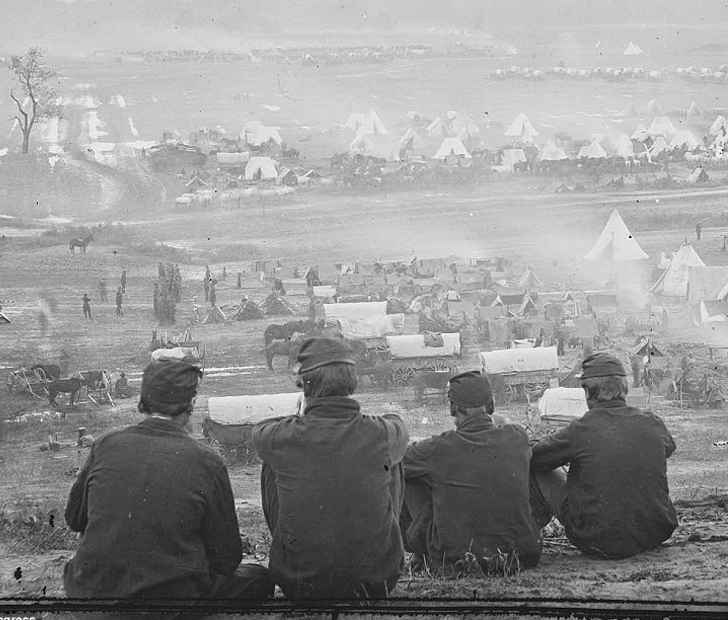
This photograph depicts the campsite in Cumberland Landing, Virginia. The Union army stationed many soldiers here in order to launch an offensive attack on the Confederate capital in 1862.
Fort Sumter
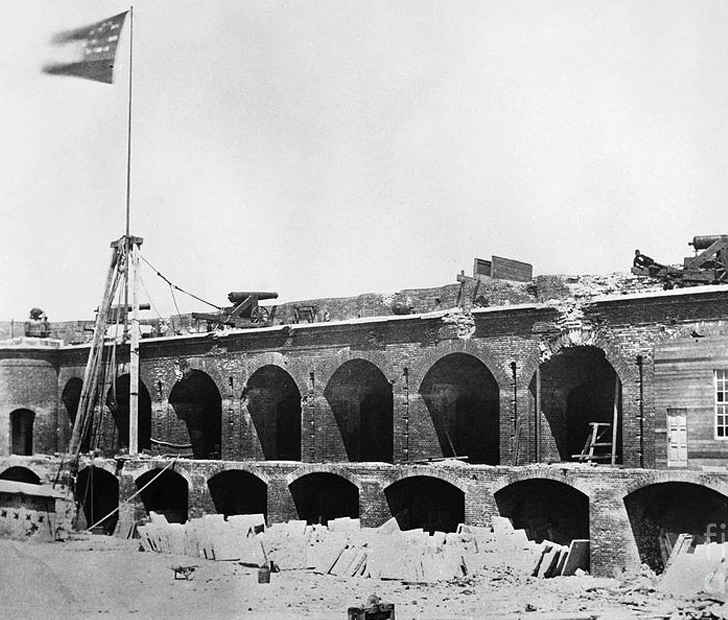
The Battle of Fort Sumter was the ambush in Charleston, South Carolina by the Confederate States Army. The Union had to surrender, and the bombardment at Fort Sumter is considered the attack that started the American Civil War. This photograph was taken shortly after the surrender.
Winter Quarters and Log Huts
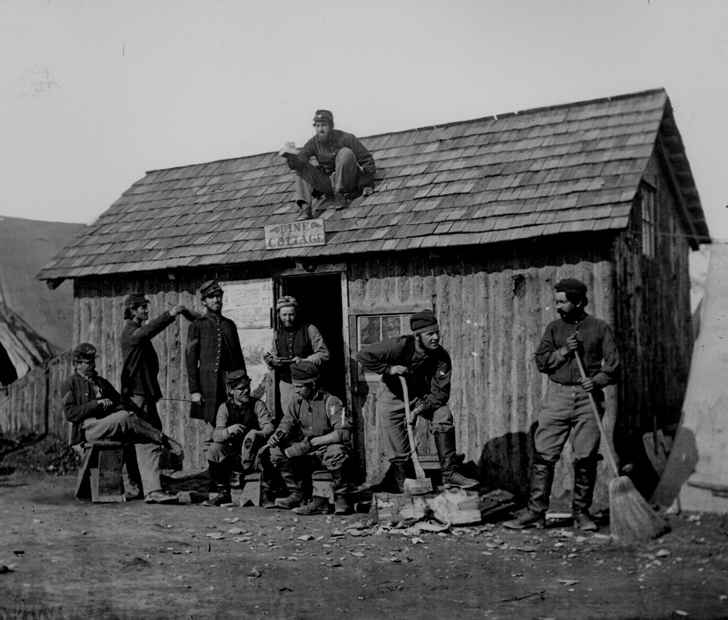
Civil war soldiers had to live in camps that were similar to small villages with streets, churches, and shops. Sounds nice, right? But the camps lacked appropriate systems to provide clean water and clear away waste. Food was always scarce, and disease spread like wildfire, due to poor ventilation in the cabins and tents. This log cabin was named “Pine Cottage.”
Lincoln Visiting Antietam
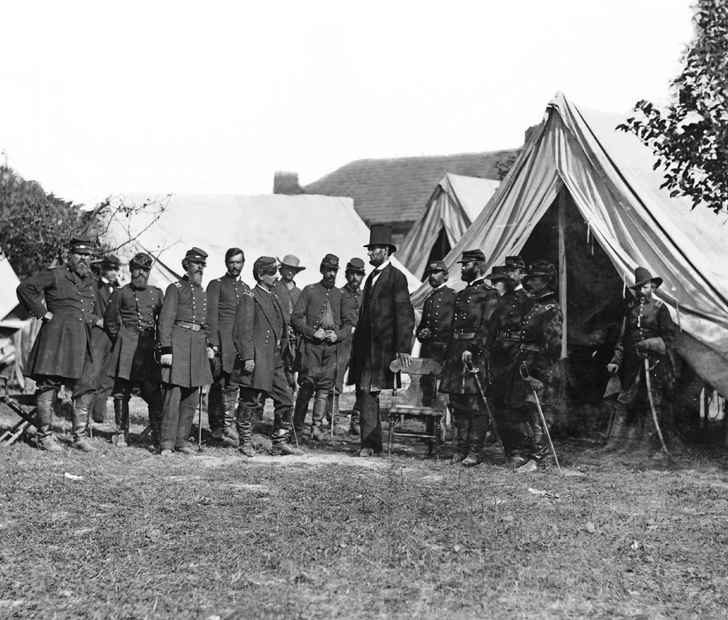
This photograph was taken when President Abraham Lincoln visited a battlefield in Antietam, Maryland. He came a few weeks after the Battle of Antietam to congratulate Union commander General George B. McClellan on the victory, and to give him a “little push” to pursue the Confederates further.
Sudley Springs
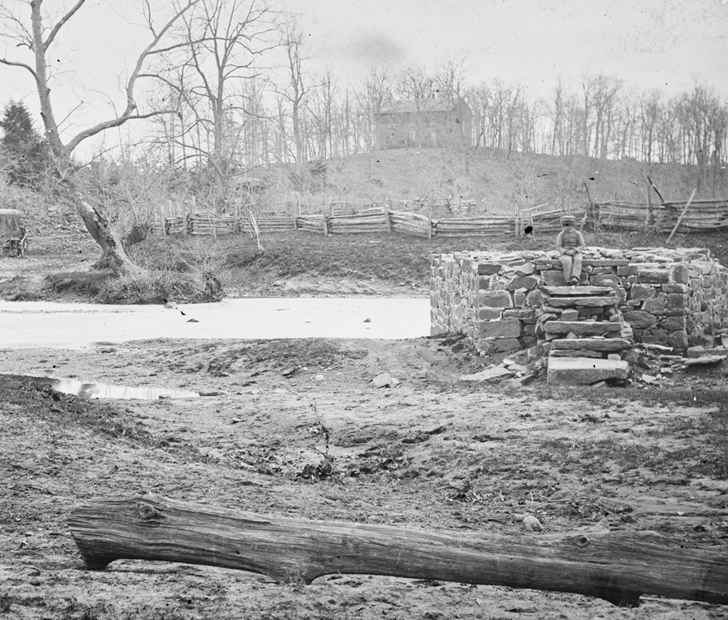
Sudley Springs was the location of the first major land battle during the Civil War, called the First Battle of Bull Run. Both the Union and the Confederates had about 18,000 poorly trained troops at the time, so the Confederates walked away with a victory and the Union messily retreated.
Council of War
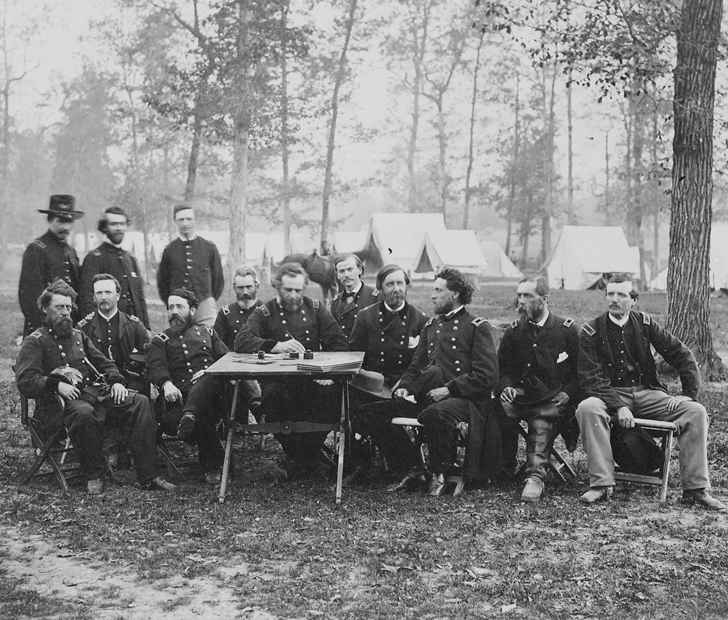
Groups of men would hold council, oftentimes in the middle of a battle, to decide on the best course of action. They would vote, and then advise the commander, who would ultimately be the one making the final decision. This photograph was taken in Ringgold, Georgia and depicts a council led by General George Thomas.
26th U.S. Colored Infantry
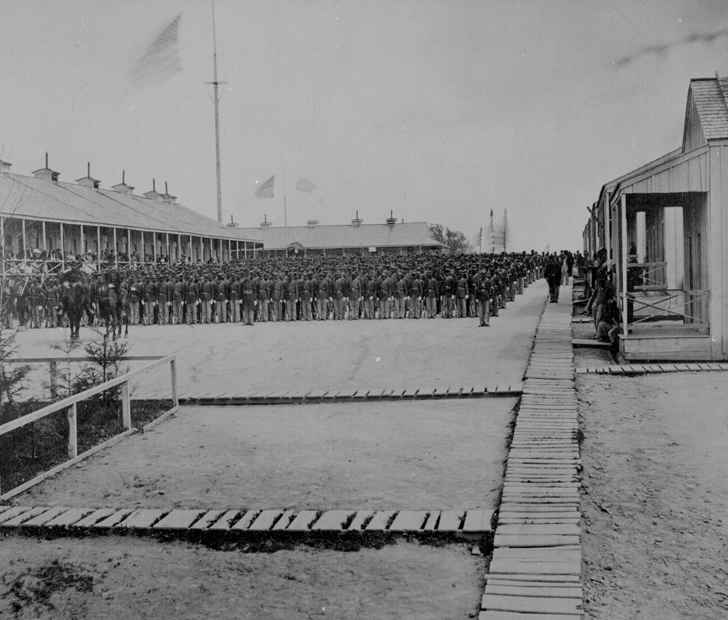
This is a photograph of the 26th U.S. Colored Infantry at Camp William Penn, a Union Army training camp known for being the first training ground dedicated to African American troops. These men enlisted out of free will, to serve the Union Army in the Civil War. 11,000 free African Americans and escaped slaves were trained here.
Slave Auction Houses
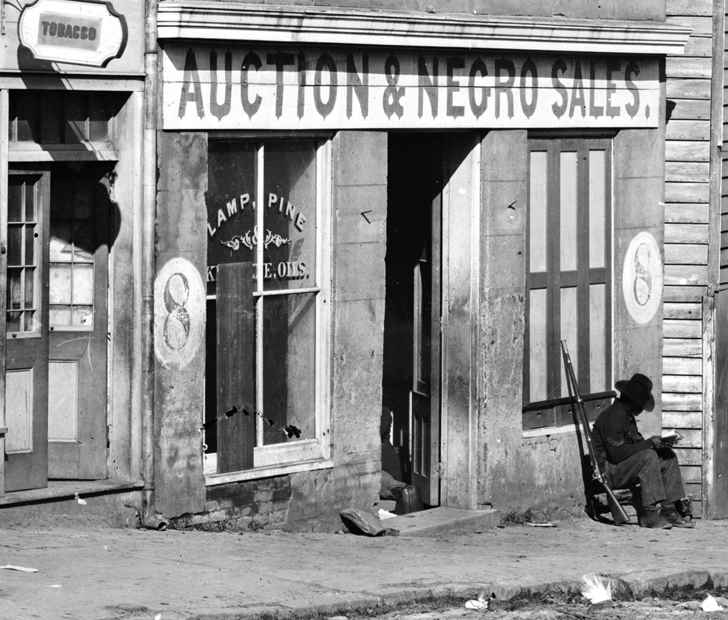
This photograph was taken at Whitehall Street in Atlanta, Georgia in 1864. Though Virginia and Louisiana were the largest slave auction states in the country at the time, these auction houses were located in many other places. Sales could rip apart African American families and leave slaves with uncertain, frightening futures.
Devil’s Den
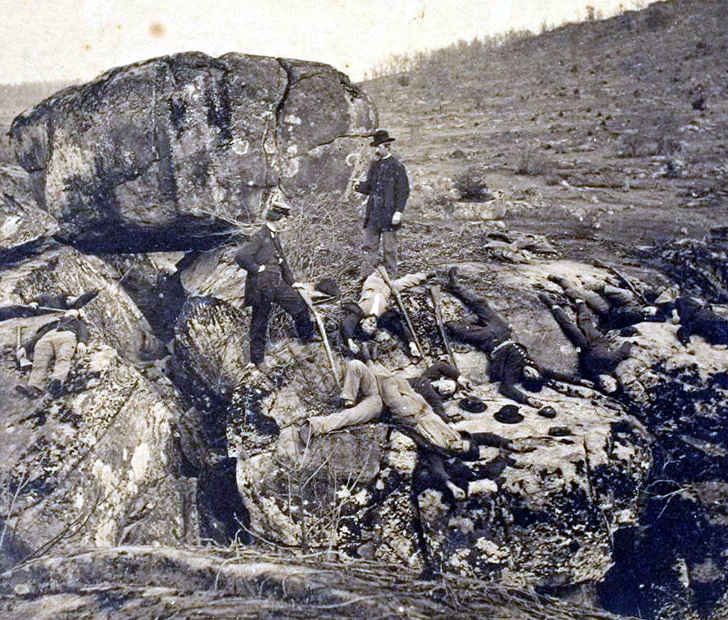
These deceased soldiers lie shot and cold on the boulders called Devil’s Den in Pennsylvania after the Battle of Gettysburg, giving viewers a graphic visual of the bloodiest battle in history. Today, Devil’s Den is a tourist spot and can be visited by anyone who wishes to climb on the rocks that the soldiers once laid upon.
Norfolk Navy Yard
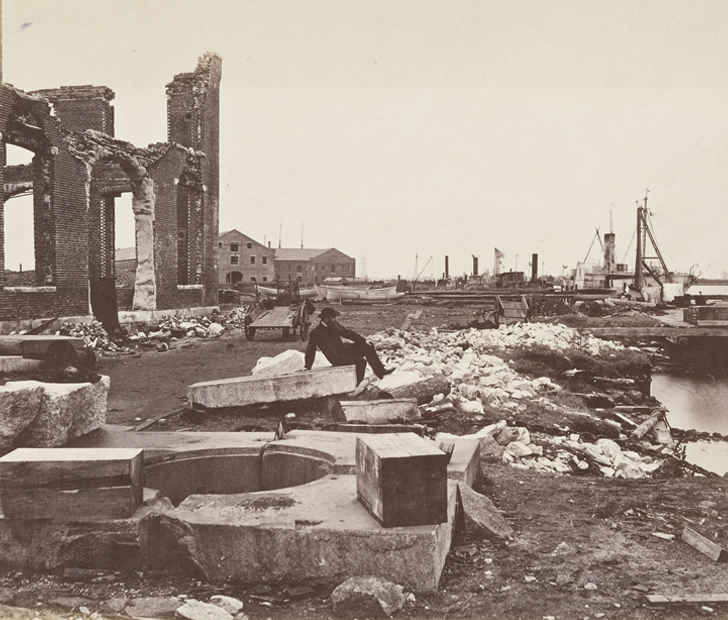
This yard in Virginia was occupied by the Confederates until May of ‘62 when Union soldiers drove them out. The location was ideal, and great for war strategy, so the Union rebuilt most of it and continued to use it. Today, it is a U.S. Navy facility for building, remodeling, and repairing ships.
Ulysses S. Grant
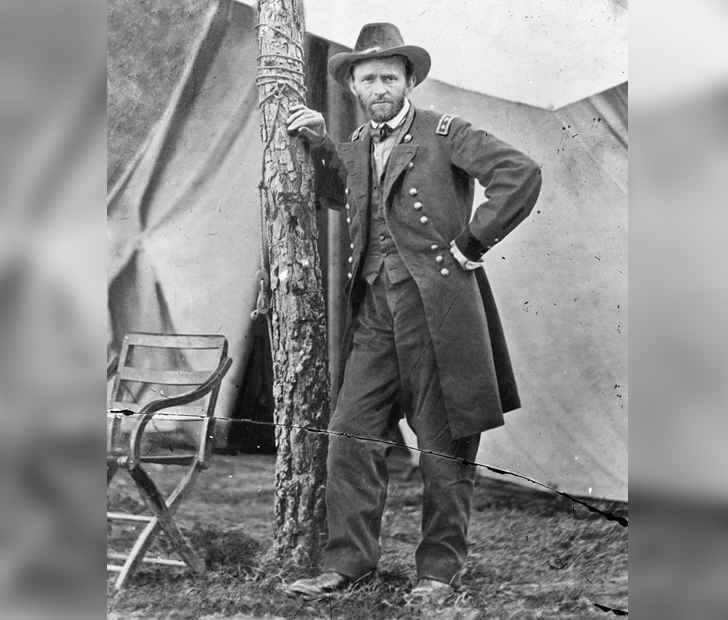
Historians have called Union general Ulysses S. Grant a “butcher” who used attrition without regard to the lives of his own soldiers in order to kill off the enemy. His armies underwent 154,000 casualties, but caused 191,000 casualties to the Confederates. He was the only general to gain the surrender of three Confederate armies. This photograph was taken in front of a tent in Cold Harbor, Virginia in June of ‘64.
Evergreen Cemetery
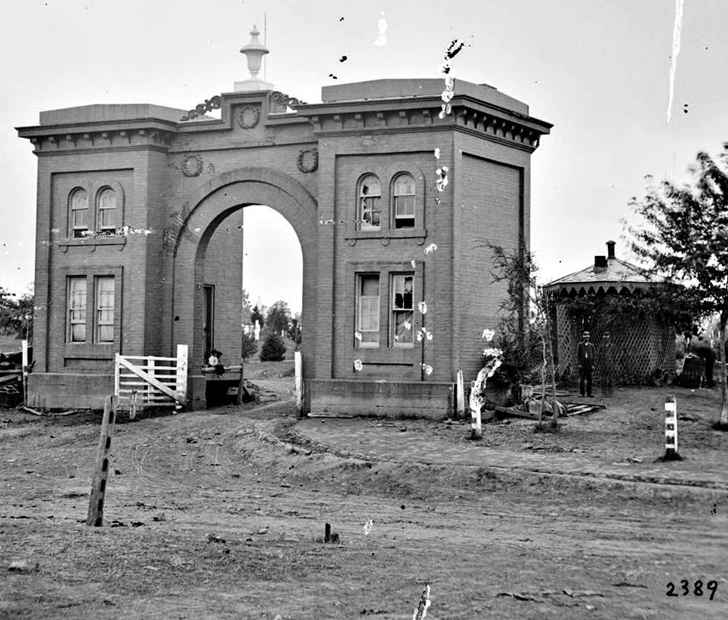
This photograph depicts the Evergreen Cemetery gatehouse, which is now a historic building in Adams County, Pennsylvania. The gatehouse played an important role in the Battle of Gettysburg, as historian Frederick Hawthorne noted by writing in his book, “the 73rd Pennsylvania Infantry rushed out through the cemetery gateway to help drive the Confederates away.” The Battle of Gettysburg was the bloodiest and largest battle of the Civil War; it was a huge loss for the Confederate Army, who never attempted to go North again, making Gettysburg a turning point in history.
Ford’s Theater
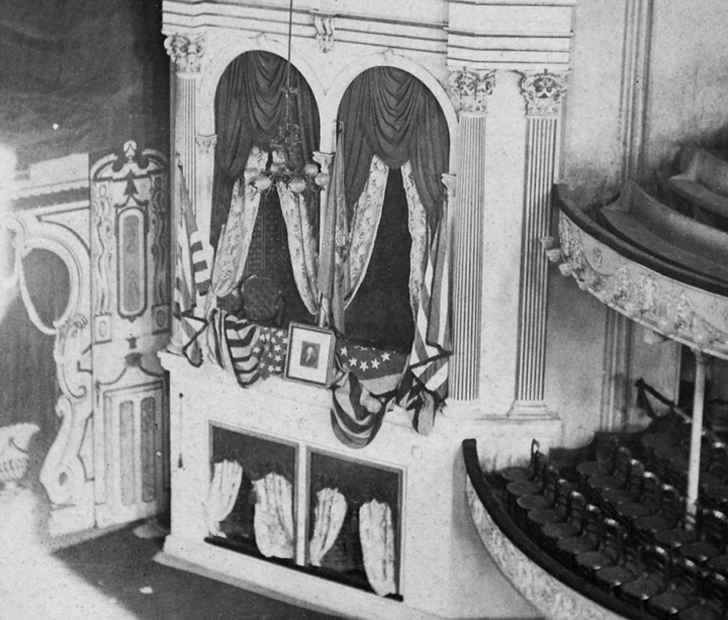
This rare photograph depicts the box in which President Abraham Lincoln was assassinated. The Ford’s Theater was closed for over 100 years, before reopening in the ‘60s. The civil war was just coming to a close when the president was shot in the back of the head by the well-known actor, John Wilkes Booth.
U.S.S. Kearsarge Officers
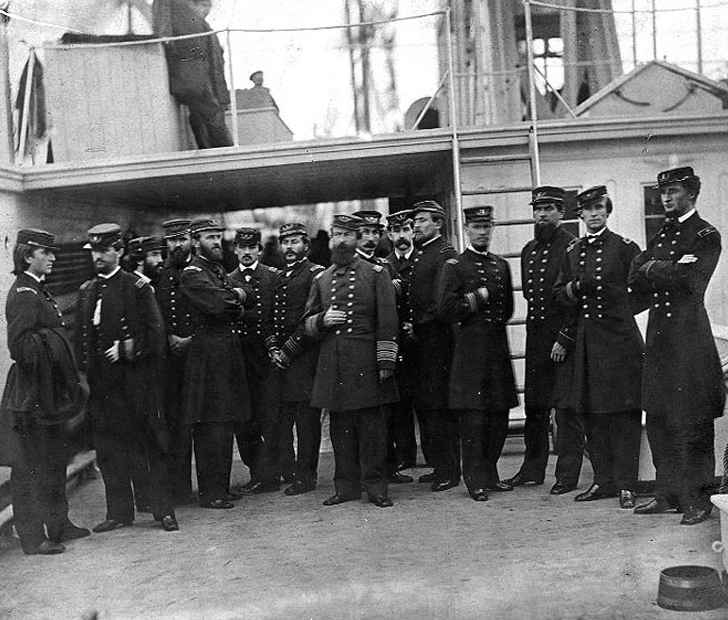
Here is a photograph of Captain John A. Winslow and his officers aboard the U.S.S. Kearsarge in 1864. This picture marked the moment after a huge win for the Union Army, after they had sunk the C.S.S. Alabama during the Battle of Cherbourg.
The Rodman Gun
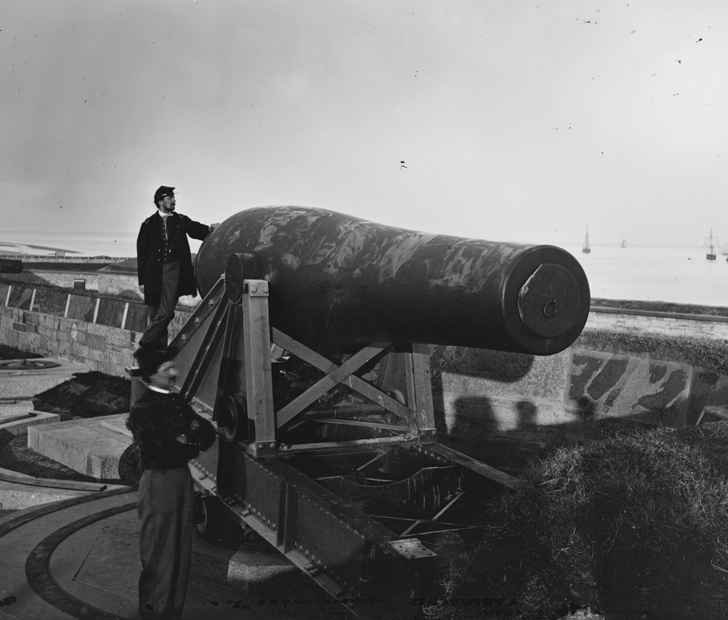
These guns were designed to fire both shot and shell, and were meant for seacoast fortifications. They were built in a variety of lengths and widths. The Rodman Gun was developed by Thomas Jackson Rodman, a Union artilleryman. The gun in this photograph was 15″ bore, close to 16 feet in length, and took 12 men to operate and maneuver.
Antietam Dunker Church
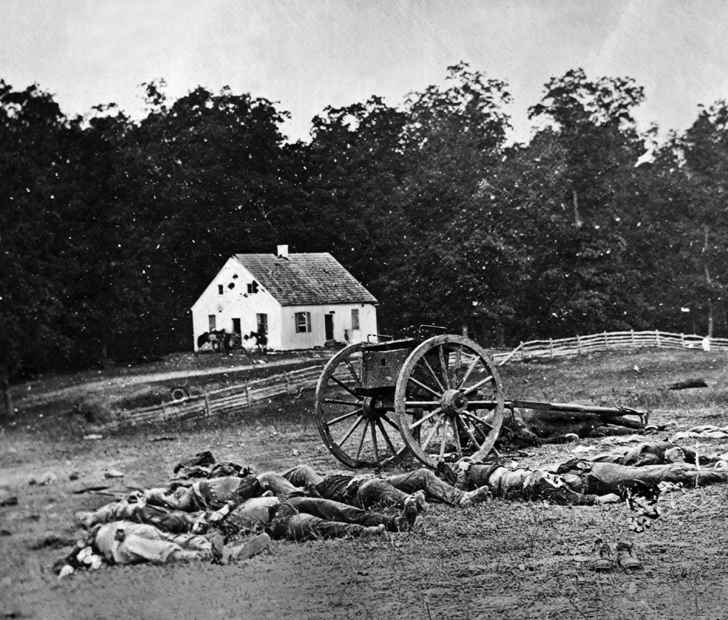
The Battle of Antietam was fought around this church near Sharpsburg, Maryland, and it was the first battle to take place on Union territory. The church was destroyed in a storm but was rebuilt in 1962 for the 100th anniversary of the battle.
Foreign Diplomats
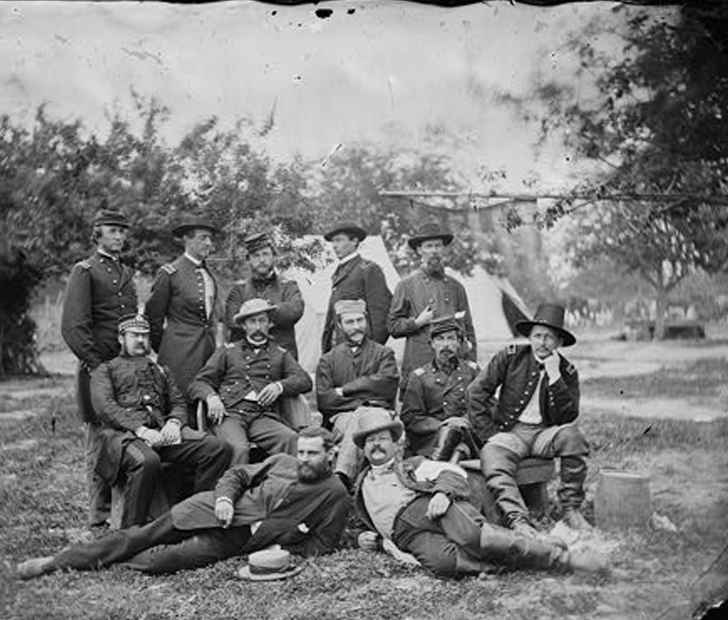
Foreign ministers from Sweden, Italy, Nicaragua, France, Great Britain, and Russia gathered near this waterfall in New York in 1863. The diplomacy of the war involved relations with the Union and Confederate Armies with the major world powers at the time. The Confederates counted heavily on Britain and France to try to fight on their side. However, every nation ended up declaring neutrality in the war.
Mary Todd Lincoln
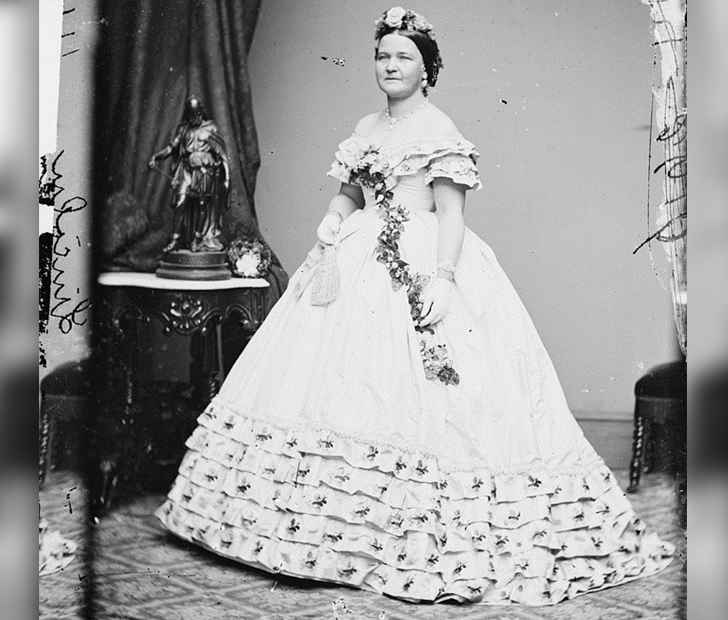
Mary Todd Lincoln was the wife of President Abraham Lincoln. She had a terribly difficult life, outliving three out of her four sons, and having to be temporarily institutionalized after Lincoln’s murder for psychiatric problems.
More From Auto Overload
-


Most Iconic Female Athletes Ever
-


Best Marvel Universe Characters
-


Air Force One Facts You Didn’t Know
-


Surf’s Up! Hilarious Beach Photos
-
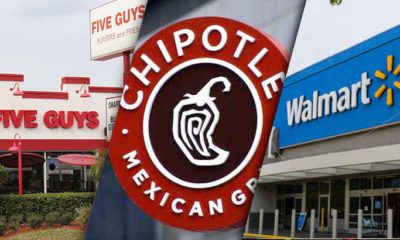

Major Brands Closing Stores in 2023
-
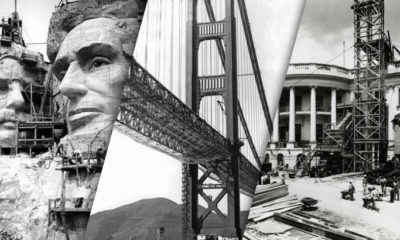

Famous Historical Landmark Construction Photos
-


The Largest Athletes In Sports History
-


Incredible Footage Caught On Trail Cams
-


Adorable Dogs Napping In The Funniest Places
-


Can You Pass This National Capitals Quiz?
-


The Top 35 NFL Expansion Targets
-
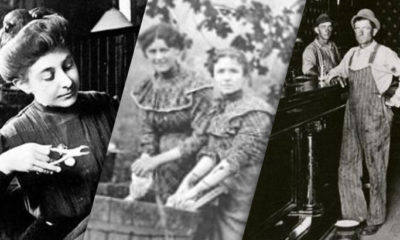

Amazing Wild West Hygiene Practices

